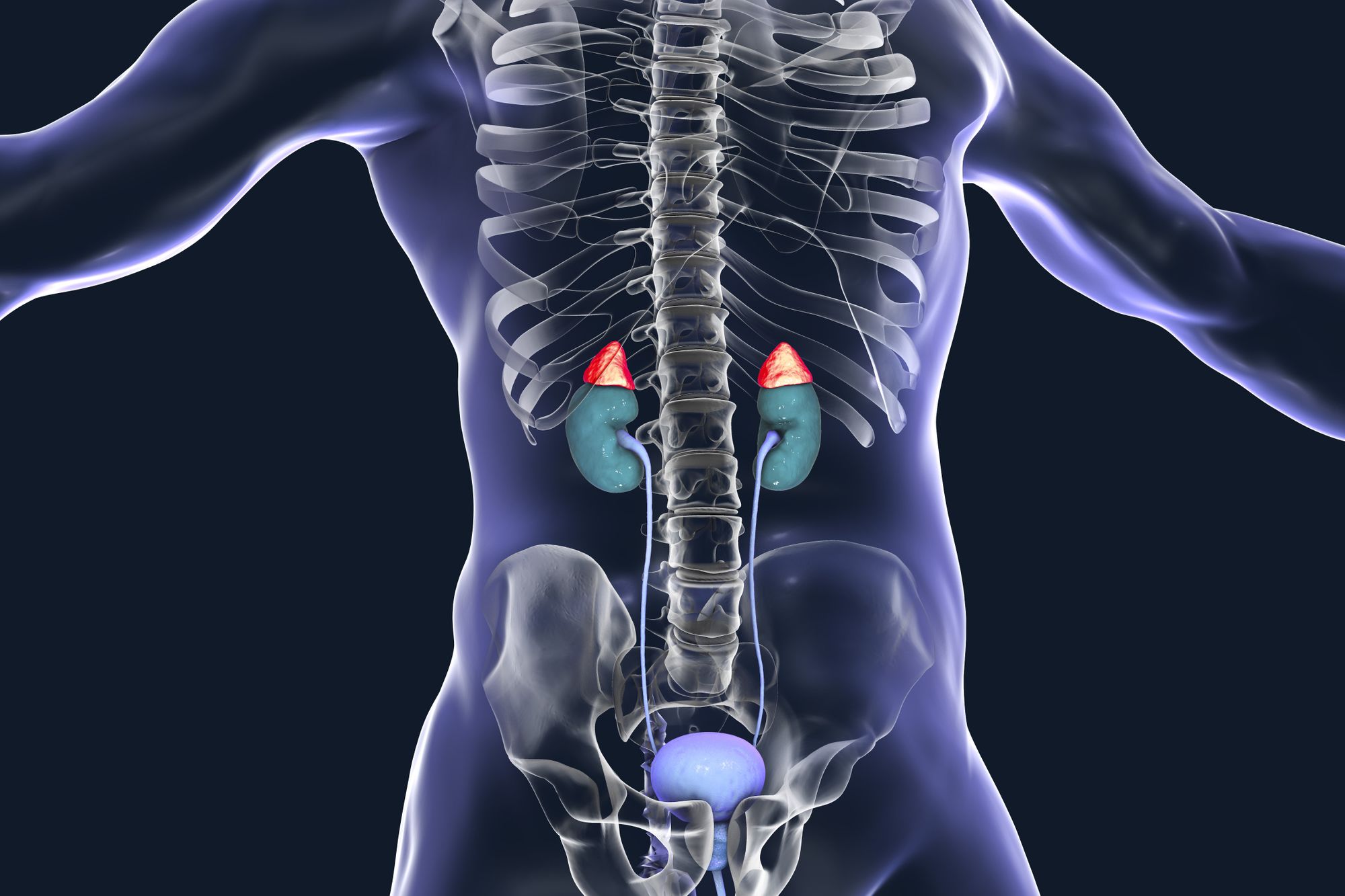Introduction
People with Congenital Adrenal Hyperplasia (CAH) live with a condition that changes the body’s ability to create key hormones. To replace these important hormones, people who live with CAH need to take constant doses of steroids, which mimic hormones and help the body function.
This means that, for people with CAH, life-long steroid use is a fact of life. While researchers are hard at work, searching for major breakthroughs in treating CAH, today the only way doctors can help patients manage their symptoms is by prescribing steroids. The management of CAH with steroids involves a very difficult balancing act between taking just enough steroids to alleviate the symptoms of CAH, but at the same time avoiding too much steroid which can lead to significant side effects. Too little steroid may not control your symptoms and may put you at risk of having an adrenal crisis. Too much steroid may control your CAH symptoms better, but can cause side effects such as weight gain, high blood pressure, increased blood sugar, bone loss, and other negative effects.
That doesn’t mean people with CAH don’t have other options. If you live with CAH—or someone you love has been diagnosed—read on to learn about the different treatment options available. We’ll cover different kinds of steroid treatment, as well as the cutting-edge of research for new therapies that are currently in clinical trials.
The first step toward being empowered is being informed.
Understanding CAH
Congenital Adrenal Hyperplasia (CAH) is a rare mutation in someone’s DNA that changes the adrenal gland’s ability to create certain hormones.
What are hormones?
Hormones are the body’s messengers: When we’re children, they’re what tell us to start growing. When we get a cut, our body releases hormones that tell our skin to heal. Hormones even help us fall asleep at night—the feeling of drowsiness is caused by a hormone called melatonin.
How does CAH affect my hormones?
CAH can affect the body in two ways: CAH can both stop us from creating certain hormones, but it can also cause us to make too much of other hormones.
Which hormones does CAH affect?
CAH primarily affects three different kinds of hormones: Cortisol, aldosterone, and androgens.
➔ Cortisol is also known as the “stress hormone.” Just like we need pain receptors to warn us to pull our hand away from a flame, cortisol is critical for the body’s response to stress, illness and injury. Because CAH prevents the adrenal gland from creating cortisol, the disorder can lead to life-threatening hormonal crises.
➔ Aldosterone is a hormone that manages blood pressure and salt-intake. Salt-intake is an extremely important part of staying hydrated. Because CAH can stop or alter aldosterone production, it can cause serious problems with hydration. Newborns with undiagnosed CAH will often be taken to the hospital with vomiting and symptoms of severe dehydration. People with CAH who have aldosterone problems are often said to have a “salt-wasting” form of CAH
➔ Androgens , sometimes referred to as “male” sex hormones, are important for growth and development for people of all genders. (Testosterone is one example of an androgen). By increasing the body’s production of some androgens beyond normal levels, CAH can alter sexual traits and cause things like early puberty, short stature, unexpected hair growth, and loss of fertility.
Why do doctors need to treat CAH with steroids?
We can’t survive without hormones like cortisol and aldosterone. Unfortunately, scientists have not yet discovered a way to fix natural hormone production in people with CAH.
That means that means doctors need to find a way to replace the missing hormones when someone has CAH. Today, the only way to do that is with steroids. Steroids act like a spare tire on a car: They do the job of hormones, and let the body continue to function. Unfortunately, like a spare tire, replacement steroids aren’t always as good as the real thing. And they can come with significant side effects.
What are steroids?
“Steroid” is simply a name for a certain kind of a chemical. These chemicals are special because they have the ability to move easily in-and-out of our cells.
Our body naturally produces many steroids—in fact, many of our hormones are steroids. The way steroids move so effortlessly through the body is one reason why they’re useful as hormones (which are, afterall, the body’s messengers).
How do steroids work to treat CAH?
Certain steroids can mimic the effect of hormones like cortisol. They’re like substitute teachers: They can come in to do someone else’s job. For hormones, that job is delivering messages. When someone with CAH takes steroids, those steroids carry important messages throughout their body, helping it work normally.
How long do people with CAH need to take steroids?
Because steroids are currently the only way to replace critical missing hormones, people with CAH need to take steroids on a regular schedule for their entire lives. Because replacement steroids are typically not as effective as your body’s own steroids, people with CAH often need higher doses of steroids in order to manage their CAH. It’s very important that CAH patients never miss their medication dose.
What are the side effects of steroids?
You may already be aware of some of the negative side effects of steroids. Steroids can have a wide range of effects because they travel so easily through the whole body. Similar to your body’s own hormones, they work great as messengers. However, the fact that steroids can travel so freely also creates problems—they can affect parts of the body they’re not supposed to. In people with CAH, replacement steroids are often dosed at higher levels than that of your body’s own hormones, in order to ensure that your symptoms are adequately controlled.
Unfortunately, for some people living with CAH, long-term, high-dose steroid use can cause serious symptoms like weight gain, bone loss, and metabolic diseases (high blood pressure, increased blood sugar, high cholesterol, etc.). Doctors will sometimes try to help patients manage these side effects with additional treatments.
What are the different kinds of steroids used to treat CAH?
Doctors will treat patients with steroids to try to replace cortisol and aldosterone. To do that, they’ll use two different classes of steroids, each of which can take different forms. Read about the different options below:
Glucocorticoids (GCs)
Glucocorticoids (GCs) are a steroid used to replace cortisol, the stress hormone. People with classic CAH on this kind of treatment will take one of the following kinds of GCs:
● Hydrocortisone : When produced by the body, hydrocortisone is just called “cortisol.” This is a natural GC that doctors can use to replace missing cortisol in the body.
● Prednisone or prednisolone : A powerful, synthetic GC. Prednisone/prednisolone mimics the effects of cortisol, but, because it’s more powerful, it can be a longer lasting treatment.
● Dexamethasone : Another, even more potent, synthetic GC. Like prednisone, dexamethasone can be a longer lasting treatment.
A patient’s doctor will determine which GC option is best for a patient based on other factors of their overall health. All of these GC treatments can be used to successfully treat CAH, but it’s very important for doctors to find the right GC, at the right dose, to treat a patient.
Mineralocorticoids (MCs)
Mineralocorticoids (MCs) are a kind of steroid used to replace aldosterone, a hormone that controls salt-intake (an important part of hydration). CAH patients with a “salt-wasting” form of the condition will take fludrocortisone , an MC that mimics aldosterone. They’ll also take sodium supplements.
Are there other treatments available besides steroids?
Because CAH is rare, researchers have yet to discover an officially approved treatment for CAH besides steroids. That could be changing: Researchers at Spruce Biosciences have developed tildacerfont, an investigational, non-steroid daily tablet currently being tested for its potential to treat CAH, as well as other endocrine disorders. With Clara Health you can help this research and potentially access tildacerfont by joining one of the ongoing late stage clinical trials as a participant. Click here to learn more about how to participate, or use the live chat below to be connected to our patient support team immediately.
Read on to learn about the science behind this cutting edge research.
Tildacerfont: A Highly Targeted Study Treatment Alternative
While steroids can affect every part of the body, tildacerfont is a non-steroid, targeted study treatment: Instead of replacing hormones, tildacerfont could help balance the body’s production of hormones in the first place.
Tildacerfont targets one of the key hormones CAH affects: androgens. Many people with CAH produce excessive amounts of androgens, which can lead to the numerous symptoms described previously. Currently, many physicians will prescribe steroids at very high dose levels in an attempt to control the body’s overproduction of androgen. The investigational drug may bring androgen production back towards optimal levels. By targeting hormone production directly, the state-of-the-art study treatment is intended to control your body’s overproduction of androgens, which could lead to improvements in your symptoms and reductions in the doses of steroids necessary to manage CAH. While not a complete replacement for steroids, tildacerfont could reduce patients' steroid-use, reducing the likelihood of long-term side effects.
A Daily Oral Study Treatment
Tildacerfont is a once- daily study medication to be taken with your evening meal. While the study medication is designed to work alongside your regular steroid treatment, it is hoped that tildacerfont could improve hormonal balance well enough to lead to a beneficial reduction in how much steroid a person with CAH has to take every day.
Currently in late-stage drug trials
Because CAH is rare, patients’ options are limited. Today, while doctors can manage CAH symptoms with steroids, there’s never been an approved treatment specifically designed for CAH.
Tildacerfont could change that. In 2019, Spruce Biosciences completed a major phase of human testing for tildacerfont, showing its potential to be well-tolerated and safe for people with classical CAH.
Tildacerfont has moved into late-stage clinical trials to further demonstrate its safety and effectiveness. In time, if future studies are successful, tildacerfont could become the first approved treatment created specifically for CAH. It would mean finally providing people with CAH a dedicated treatment option. If you live with CAH, you can learn more about joining these late-stage clinical trials HERE.




